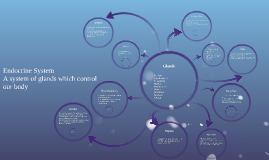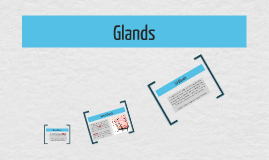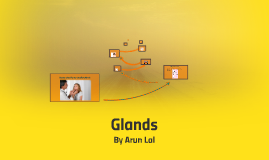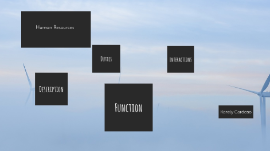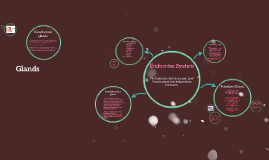Glands
Transcript: Action: The hypothalamus is involved in many functions of the autonomic nervous system, as it receives information from nearly all parts of the nervous system. As such, it is considered the link between the nervous system and the endocrine system Disease: A physical injury to the head that impacts the hypothalamus is one of the most common causes of hypothalamic disease. Location: The pituitary gland is only about 1/3 of an inch in diameter (that’s about as large as a pea) and located at the base of the brain. Hormones: Anterior Lobe Hormones: Adrenocorticotropic hormone (ACTH) Follicle-stimulating hormone (FSH) Growth hormone (GH) Luteinizing hormone (LH) Prolactin Thyroid-stimulating hormone (TSH) Posterior Lobe Hormones: Anti-diuretic hormone (ADH) Oxytocin Endocrine System Location: The thyroid gland is the biggest gland in the neck. It is situated in the anterior (front) neck below the skin and muscle layers. Hormones: The thyroid gland produces thyroxine which is a prohormone and smaller amounts of triiodothyronine, the active hormone. Target: The thyroid gland produces hormones which regulate the body’s metabolic rate as well as heart and digestive function, muscle control, brain development and bone maintenance. Pancreas Gland Action: breaking down the bone (where most of the body's calcium is stored) and causing calcium release increasing the body's ability to absorb calcium from food increasing the kidney's ability to hold on to calcium that would otherwise be lost in the urine. Disease: Hypothyroidism, Subacute thyroiditis, Toxic adenomas Adrenal glands Ovaries Target: Reproduction Action: Once the sperm are produced in the seminiferous tubules they pass into the epididymis, a long coiled tube in which sperm mature as they are conveyed along it. They are then ready to be released at ejaculation via the vas deferens. Disease:Infertility, Testicular Cancer, Cryptorchidism Location: Below the Thalamus, above the brainstem Hormone: produces releasing and inhibiting hormones, which stop and start the production of other hormones throughout the body. Target Function: It is responsible for maintaining your body’s internal balance, which is known as homeostasis Glands Pituitary Gland Pancreas gland The adrenal glands are two glands that sit on top of your kidneys that are made up of two distinct parts Location: The adrenal glands are two, triangular-shaped organs that measure about 1.5 inches in height and 3 inches in length. They are located on top of each kidney Hormone: glucocorticoids and mineralcorticoids. Pituitary Gland Location: The testes, also known as testicles or male gonads, lie behind the penis in a pouch of skin called the scrotum. Hormone: Testosterone Parathyroid glands The Endocrine System is made up of 9 major glands that help produce hormones. Location: The body has four parathyroid glands that are located just behind the thyroid gland. Hormone: Parathyroid Hormone Target: The main target organs where parathyroid hormone exerts its effects are the bones, kidneys and gut to balance calcium concentration in the blood Hypothalamus Gland Thyroid gland Location:They are oval in shape, about four centimeters long and lie on either side of the womb (uterus) against the wall of the pelvis in a region known as the ovarian fossa Hormones: oestrogen and progesterone Target: Reproduce Action:Menstrual cycle, ovulation Disease: Ovarian Cysts, Premature Ovarian Failure Adrenal Gland Testes Target:to help control your circadian (or biological) rhythm and regulate certain reproductive hormones Action: Helps control circadian rhythms Disease:Tumors Thyroid gland Target: The adrenal cortex—the outer part of the gland—produces hormones that are vital to life, such as cortisol (which helps regulate metabolism and helps your body respond to stress) and aldosterone (which helps control blood pressure). Action: But the adrenal glands contribute to your health even at times when your body isn’t under extreme stress. In fact, they release hormones that are essential for you to live. Disease: Adrenal Cancer, Parathyroid Glands Hypothalamus Pituitary Thyroid Parathyroids Adrenals Pineal Ovaries Testes Pancreas Target Function: The pituitary gland is often dubbed the “master gland” because its hormones control other parts of the endocrine system, namely the thyroid gland, adrenal glands, ovaries, and testes. Action: The pituitary gland is immensely important to the overall function of your endocrine system—and to your overall health. By working with the hypothalamus, the pituitary gland ensures that all your body’s internal processes work as they should.. Diseases: Tumors, hormonal imbalances, Pituitary Apopolexy Location: Upper Abdomen Hormone: insulin, glucagon Target: a digestive exocrine gland and a hormone-producing endocrine gland. The pineal gland was once dubbed the “third eye,” which originated for many reasons, ranging from its location deep in the center of the brain to its connection to light.






